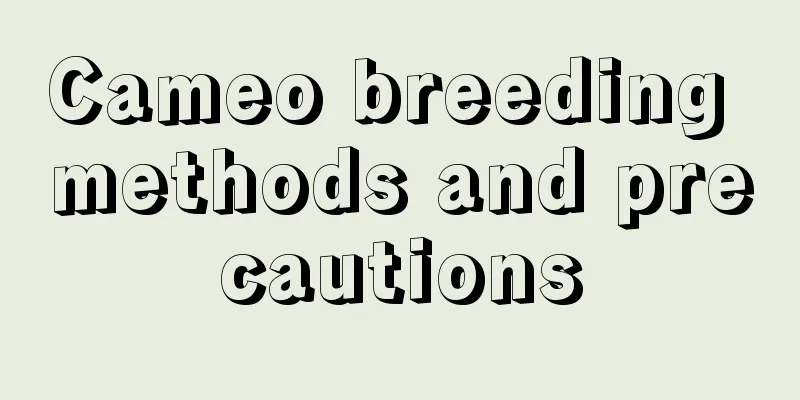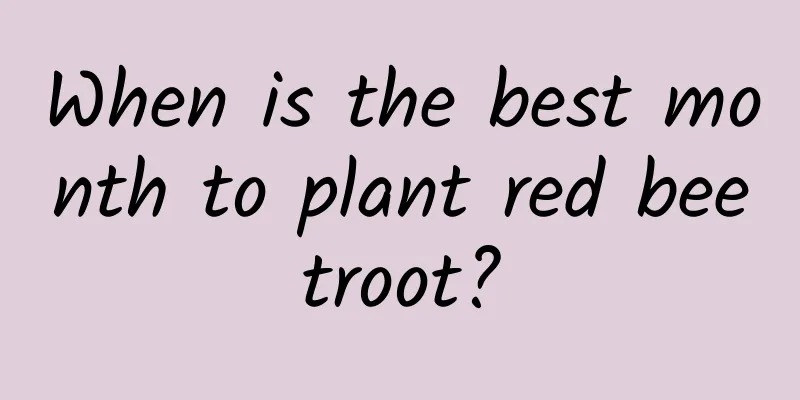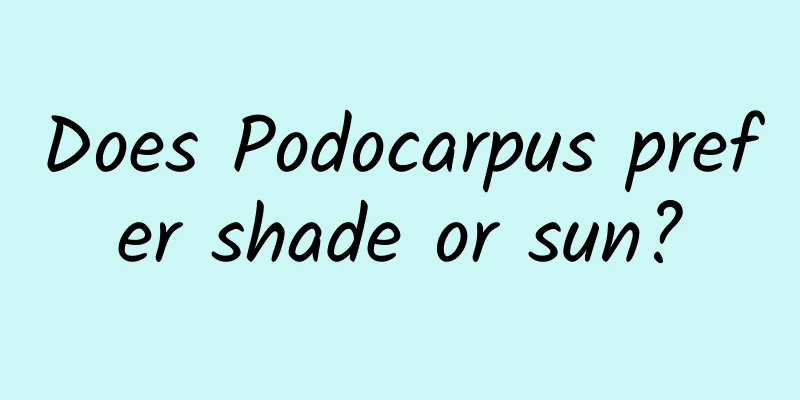Cameo breeding methods and precautions

1. Maintenance methods1. Temperature: Cameo likes warmth and has a low resistance to cold, so it needs to spend the winter indoors. The temperature suitable for its growth is between 18 and 25 degrees, but the temperature cannot exceed 30 degrees. 2. Watering: Normal growth does not require too much water, just keep the soil moist, and water it once every week or so. If there is stagnant water, the leaves will easily rot, thus greatly reducing the ornamental value. At the same time, the air should not be too dry. You can spray water mist in the air to replenish moisture. In winter, you should be more restrained in watering, and watering once a month is enough. 3. Light: Mild sunlight helps its growth. Warm sunlight can make its branches and leaves more shiny, and sufficient light will turn the branches and leaves of the plant red, making its ornamental value higher. Therefore, it should receive full sun in spring and winter, and appropriate shade in summer. 4. Fertilization: The demand for fertilizer is not very high, so fertilize about once a month. The main method is to dilute the fertilizer cake water, and some special fertilizers can also be applied, which will be beneficial for absorption. 2. Breeding techniques1. Reproduction: Cutting and division are two important methods of reproduction. For cuttings, mature branches and leaves should be selected, but the cutting needs to be steady, accurate and fast so that the wound can recover well. Then just place the branches and leaves in the flowerpot and wait for them to sprout. Generally, two to three-year-old mature plants are selected for division, and division is usually carried out in the spring of each year. 2. Pruning: There is no need to prune frequently. You just need to observe the plants regularly and cut off any withered branches and leaves in time. The pruning should not be too large. 3. Problem diagnosis and treatment1. Disease: Rust will occur, which will cause some yellow-brown spots to appear on the roots of the plant, so it is necessary to use carbendazim solution to control it. 2. Pests: Root-knot nematode disease may occur and can be completely eliminated by turning the soil. IV. Other issues1. Toxicity: The whole plant is non-toxic and is commonly cultivated. 2. Can it be raised at home? Yes, it has a unique appearance and is very ornamental. |
Recommend
The fastest way to root lily cuttings
Lily cutting time The best time to take lily cutt...
When is the best season to plant edamame?
Edamame planting season and time Edamame can be p...
How to plant the seeds of Pagoda Flower
Choice of planting soil Planting soil is the subs...
Can dandelions be planted in the yard?
Can I grow dandelions in my yard? Dandelions can ...
When is the best month to plant aloe vera?
Aloe vera sowing time Aloe vera is an evergreen h...
How to propagate ginger flower by division
Ginger flower division propagation Generally, div...
What is hair vegetable?
What is hair vegetable? Hair moss is actually hai...
How to grow rue
Planting method Planting method If you want to pl...
Grape planting methods and precautions
When are grapes planted? It is better to plant gr...
Cultivation methods and precautions of purple-backed arrowroot
1. Breeding methods Temperature and light Purple-...
When to plant osmanthus seedlings and how to cultivate them
1. Planting time It likes a warm, humid and sunny...
Ten taboos for raising grass carp
Grass carp, also known as silver carp, oil silver...
Where is the best place to plant Atractylodes macrocephala?
Atractylodes macrocephala planting conditions Atr...
Can Tiger Tail Orchid be placed in the bedroom?
1. Is it possible? Tiger tail orchid can be place...
How to grow jasmine so it blooms three times a year
Jasmine blooms for the first time In a year, the ...









